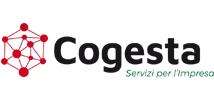It’s all of the work a team will tackle in the future, but it’s also a flexible, living organism that evolves as a development team learns more about the product and its stakeholders. Backlogs are in constant evolution, changing and adapting based on the current needs of stakeholders and customers. To keep a backlog up-to-date and in its most effective form, it needs to be continuously refined and adapted. This process takes time, but there are simple, powerful strategies for maintaining a quality backlog.
The acronym “DEEP” stands for “Detailed”, “Emergent”, “Estimated”, and “Prioritized”, which are the four key attributes of a well-structured product backlog. The Product Backlog lists all features, functions, requirements, enhancements, and fixes that needs to be developed for the product release. It helps ensure the team is working on the most important and valuable features, fixing the most important bugs, or doing other important work critical to product development. Over the time horizon of multiple release cycles, INVESTing in stories has even poorer returns compared to INVESTing in stories for a single release cycle. This kind of INVESTment will not yield expected results as stories are very likely to change over a much longer duration of multiple release cycles.
Benefits of productive backlog refinement sessions
While the backlog is intended to serve as a simple tool, it can become rather complex to work with in many cases. It becomes an obstacle rather than an enabler for a product manager or product owner to do their best work. The DEEP concept can help to deal with this problem and enhance our chances of building products that customers love. A product backlog captures the details about all we are planning to do, to achieve our vision. It is a prioritized list of everything that is deemed necessary related to required initiatives, projects and even the smaller things like requests and tech debt.
There is no fixed length for a backlog refinement meeting because it depends on project complexity and the size of the product backlog. But it is a good practice to allocate two hours for the first few meetings. Once a project is underway, one-hour refinement meetings are common, and these meetings often get shorter as sprints progress.
establish milestones for the backlog
By defining this process in advance, there will be clarity about what needs to happen next and when. This will help ensure that everyone understands what it means and how they will work with its contents. Learn how to manage, structure and https://infodnepr.ru/?module=articles&action=view&id=9124 build culture with a distributed agile team. 📘 Read our guide to incorporating user story points to start using this technique. A Product Backlog Item is estimated when the team has assigned it a value that represents its approximate size.
- Before creating a backlog, define its scope, whether it should apply to a product line, a group of products, or all of the company’s products—this will help you to manage the features.
- Although product backlog management is the responsibility of the Product Owner, the whole team can participate in refinement.
- One way to keep the team focused and optimize meeting times with sponsors, product managers, and other stakeholders is to split sessions into two or more sessions, ideally lasting one hour each.
- If you have five tasks, each task on an average should take four hours of ideal time effort or less.
- The DEEP concept can help to deal with this problem and enhance our chances of building products that customers love.
Still, the truth of the matter is that, at any given point, we know the least we’re ever going to about a project because we acquire new information. Toward the end of the semester, my professor dropped the last three assignments from the class requirements as we approached the holiday season. I remember my relief that I had devoted nearly no time to those assignments. It would have been a waste if I’d risked my progress to create a work that the professor would never review.
Why Product Managers Need to Think about Product Strategy
DEEP is a useful concept to be applied in the Product Backlog refinement process which involves the act of adding detail, estimates, and order to items in the Product Backlog and keeping it in shape. As the project progresses, more and more information and knowledge are obtained, and the user stories in the product Backlog are also added, removed, or rearranged. A good rule of thumb for splitting work is ensuring each backlog item never takes over half a sprint to complete.
The agenda’s main purpose is to keep the team focused on the selected backlog items and successfully complete the refinement activities within the time set for the meeting. Atlassian’s meeting agenda template makes setting agendas, capturing notes, and sharing action items easy for Agile teams by providing a premade format for your meeting minutes. Jira Software’s backlog feature makes it easy to collaborate with team members on backlog refinement. You can add comments and details to every item, assign tasks to team members, and list and prioritize items according to value or risk. Jira Software makes it easy to streamline your backlog refinement meetings and improves the overall project management process.
